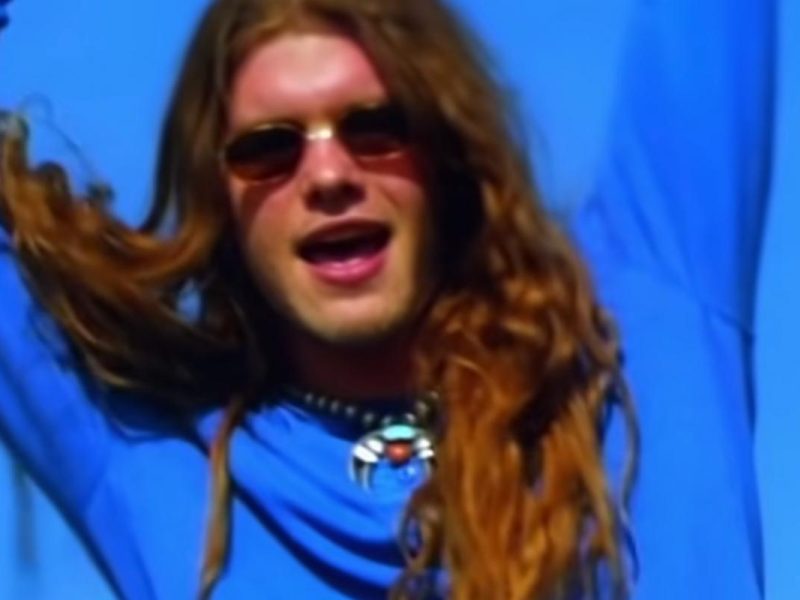All should have been well in 1982 as Pat Benatar settled in to record her fourth album, Get Nervous.
Her previous three records were all multi-platinum sellers, and songs like “Hit Me with Your Best Shot” and “Promises in the Dark” had cast her as a tough, no-nonsense, strong woman in a largely male-dominated field. Her band was also a tight unit, capable of blowing the roof off any arena in the country. What’s more, she had married her guitarist, Neil “Spyder” Giraldo, after a tumultuous period in which they appeared close to permanent personal separation, even as their creative partnership was peaking.
It was, as they say, all good. Leave it to her record company, Chrysalis, to put a damper on things with an approach to Benatar’s career that was all too typical at the time.
“I was a woman who [had] so much power, making this record company 15, 20, 30 million dollars a year,” Benatar told Culture in 2003, “and I would be at a table with all these men and we’d all be sitting there. … They’d lean across with that lecherous look and go, ‘What are you going to wear for the video?’ And I would look at them stunned, like ‘You’ve gotta fuckin’ be kidding me. I just made you guys like 25 million fuckin’ dollars, you ask me what I’m going to wear in the video?’ I used to go nuts. I would go nuts. So it was just – it was so disgusting.”
One thing Chrysalis actually did right was approving producer Peter Coleman, who’d worked with Benatar and Giraldo on her debut record in 1979.
Watch Pat Benatar’s Video for ‘Little Too Late’
“As a producer, we knew Peter to be a patient and inspiring teacher,” Benatar said in her 2010 memoir Between a Heart and a Rock Place. “On In the Heat of the Night, he’d created an atmosphere of limitless creative freedom and given us confidence in our own abilities. There’d been no worries about looking foolish or making a mistake. Everything was worth trying. Peter had no ego issues, and he was genuinely interested in helping us put on tape what we envisioned. He’d found ways to technically implant what we heard and felt artistically.”
Benatar also had a brace of quality songs to begin working on. Songwriter Billy Steinberg returned to work with Giraldo, have already written the title track of Benatar’s previous album, Precious Time. They come up with four songs that Benatar and her band began recording immediately, including three of the five tracks on the album’s first side: “Anxiety (Get Nervous), “Fight It Out,” and “The Victim.”
Chrysalis continued to pitch other songwriters. “We weren’t opposed to considering outside material,” Benatar wrote in her memoir, “but by this time we were writing a lot of good songs ourselves. Our goal was to keep honing those skills so that we could record songs that had relevance to our situation. We wanted to create art in musical form that belonged to us – not simply embellish someone else’s ideas.”
One song on which such embellishment yielded something truly special was “Shadows of the Night,” a David Leigh Byron-penned track that Rachel Sweet had recorded a year earlier. Benatar agreed to record it, but with a caveat.
Drummer “Myron [Grombach] and I rewrote many of the lyrics to make it work for me,” she said in Between a Heart and a Rock Place. “We did get paid for our work but got none of the credit for being writers on a monstrous hit. That would not happen today. If an artist changes lyrics or adds musical licks, the artist is credited. People demand that.”
Back in the studio, Benatar noticed a difference in how Giraldo produced her vocal performances. “He pushed me every step of the way, keeping my voice high and powerful,” she recalled in the memoir. “Too high for the live shows. I kept saying, ‘Come on, this is easy in the studio – but what about when I’m running around onstage?'”
Watch Pat Benatar’s Video for ‘Anxiety (Get Nervous)’
Giraldo heard out Benatar when she complained about the keys certain songs were written in, but most times he would impress on her to dig down and reach for those notes. “Sometimes he wanted vocal performances that were so physically difficult I’d cut a session off abruptly and storm out,” she wrote. “We’d duke it out, eventually coming to some kind of compromise, but he was always gentle and subtle. He’d coax rather than demand, ever the consummate coach tasked with convincing me that I had it in me all along.”
One great example of this is “Tell It to Her,” on which Benatar explores the low and high registers of her voice, as she tells the first-person tale of a jilted lover. She amps up the tension in the middle eight, hitting the high notes with a gruff attack, emphasizing not just her anger but her pain. It’s an exquisite moment, one of the best on Get Nervous.
Any argument Benatar had with Giraldo in the studio paled in comparison to the one she had with Chrysalis label head Terry Ellis over the cover art. Eager to avoid any focus on her body as previous album art had done, Benatar’s original concept was about as un-glamorous as possible: her hair was flying in all directions, her eye makeup was a fearsome shade of red, and her upper body was in a straight jacket.
Listen to Pat Benatar Perform ‘Tell It to Her’
When Ellis saw the cover drafts, he informed Benatar that if she didn’t re-shoot the cover, he would shelve the record. To compound the threat with an insult, he reportedly said, “I hope you don’t think people are actually coming to your concerts to listen to you sing.” According to Benatar, she responded to Ellis’ comment by slapping him in the face.
Interviewed later on VH-1’s Behind the Music, Ellis denied there was any physical altercation. Either way, a compromise was brokered: Benatar got the inmate-in-the-asylum cover, albeit with toned-down makeup and hair. Get Nervous was released Oct. 29, 1982, and quickly went platinum.
The tour that followed almost made all the conflict with Chrysalis worthwhile. “The best part about the live performances on the tour for Get Nervous was that for the first time in two years we were able to enjoy ourselves,” Benatar recalled in her memoir.”We were all able to just relax, play, and enjoy life on the road. It was the biggest relief – for everyone. The band and crew practically threw a party. Without the distraction of fighting, we all had renewed enthusiasm, and it showed in our performance.”
Legends Who Never Had a No. 1 Single
It’s all the more surprising when you consider the success so many of them had by any other measure.



